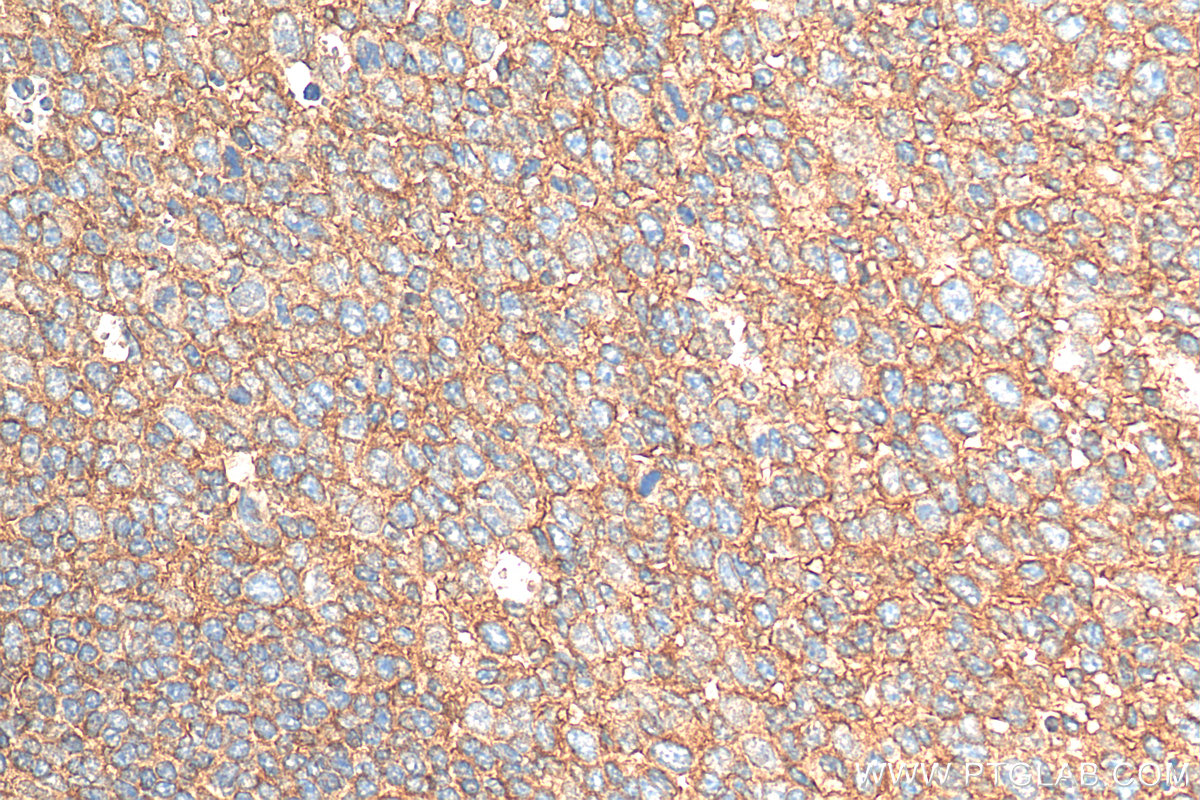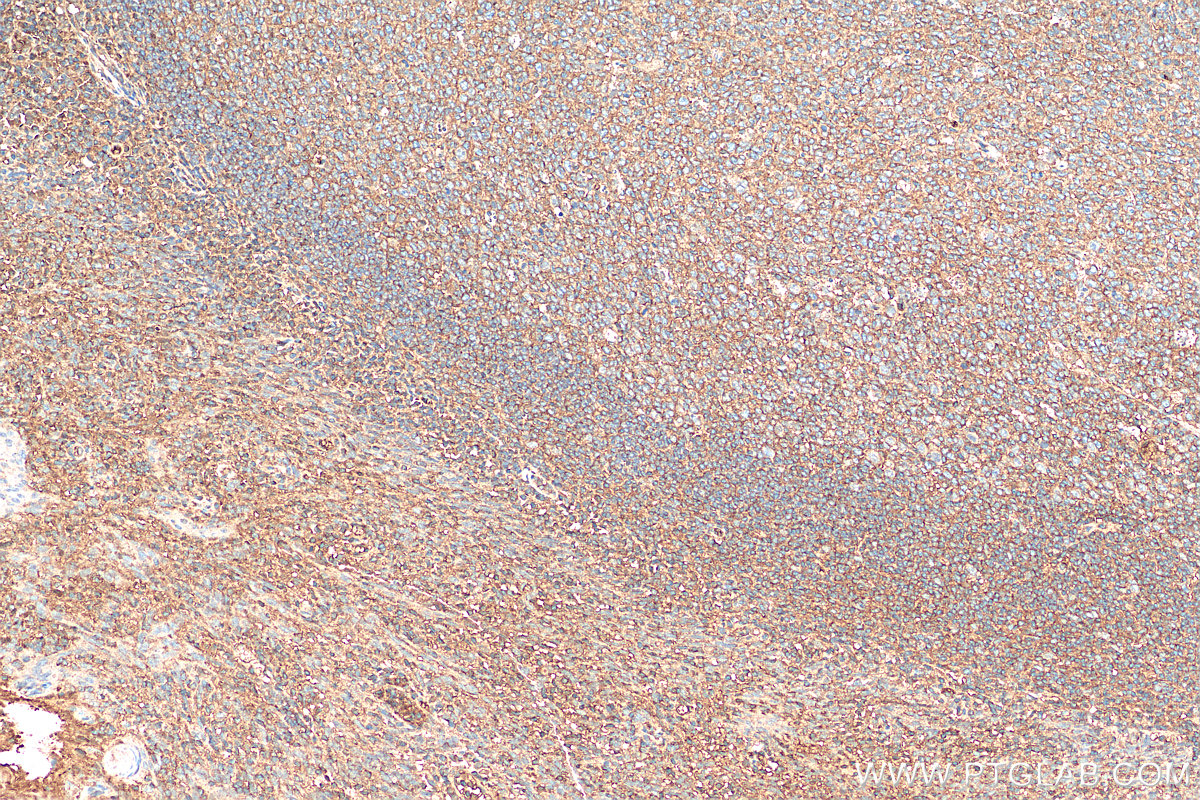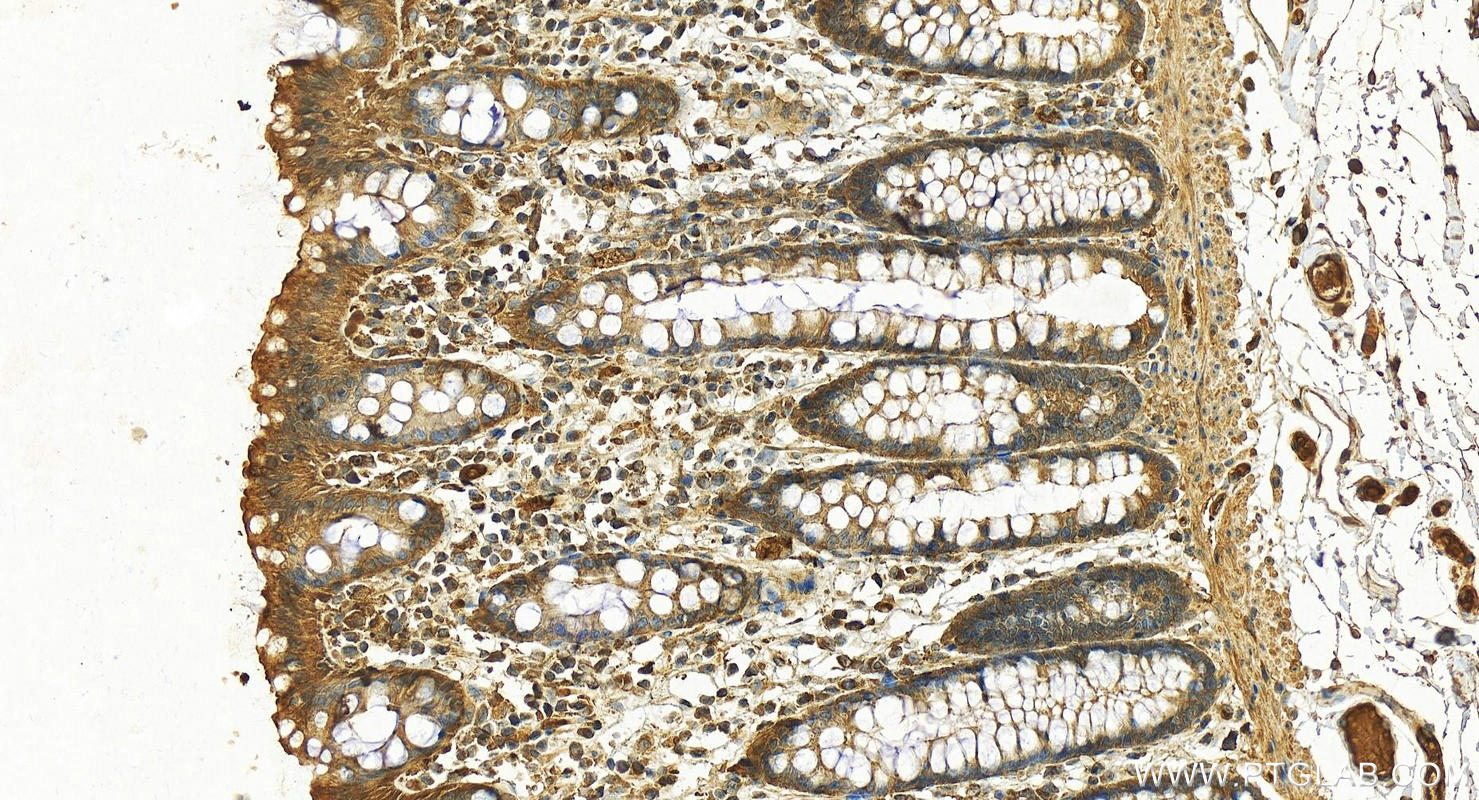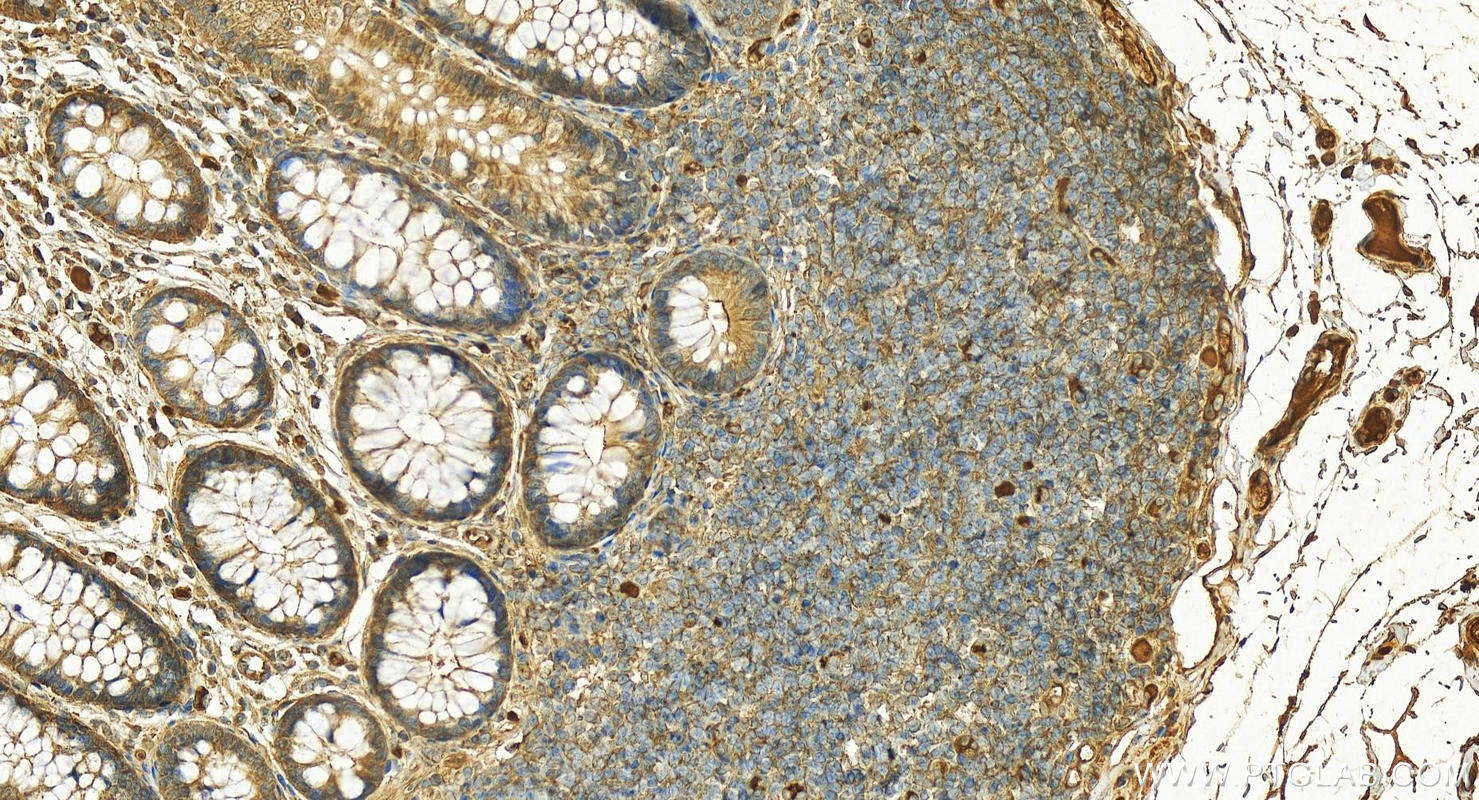验证数据展示
经过测试的应用
| Positive WB detected in | human plasma, HeLa cells, human liver tissue, L02 cells, mouse liver tissue, HepG2 cells, human urine tissue |
| Positive IHC detected in | human tonsillitis tissue, human normal colon Note: suggested antigen retrieval with TE buffer pH 9.0; (*) Alternatively, antigen retrieval may be performed with citrate buffer pH 6.0 |
| Positive IF/ICC detected in | HepG2 cells |
推荐稀释比
| 应用 | 推荐稀释比 |
|---|---|
| Western Blot (WB) | WB : 1:1000-1:4000 |
| Immunohistochemistry (IHC) | IHC : 1:200-1:800 |
| Immunofluorescence (IF)/ICC | IF/ICC : 1:200-1:800 |
| It is recommended that this reagent should be titrated in each testing system to obtain optimal results. | |
| Sample-dependent, Check data in validation data gallery. | |
产品信息
12259-1-AP targets SERPING1/C1 Inactivator in WB, IHC, IF/ICC, ELISA applications and shows reactivity with human, mouse samples.
| 经测试应用 | WB, IHC, IF/ICC, ELISA Application Description |
| 文献引用应用 | WB, IHC, IF |
| 经测试反应性 | human, mouse |
| 文献引用反应性 | human, mouse |
| 免疫原 | SERPING1/C1 Inactivator fusion protein Ag2819 种属同源性预测 |
| 宿主/亚型 | Rabbit / IgG |
| 抗体类别 | Polyclonal |
| 产品类型 | Antibody |
| 全称 | serpin peptidase inhibitor, clade G (C1 inhibitor), member 1 |
| 别名 | Serpin G1, SERPING1, C1NH, C1-inhibiting factor, C1IN |
| 计算分子量 | 500 aa, 55 kDa |
| 观测分子量 | 100 kDa |
| GenBank蛋白编号 | BC011171 |
| 基因名称 | SERPING1 |
| Gene ID (NCBI) | 710 |
| RRID | AB_2285663 |
| 偶联类型 | Unconjugated |
| 形式 | Liquid |
| 纯化方式 | Antigen affinity purification |
| UNIPROT ID | P05155 |
| 储存缓冲液 | PBS with 0.02% sodium azide and 50% glycerol , pH 7.3 |
| 储存条件 | Store at -20°C. Stable for one year after shipment. Aliquoting is unnecessary for -20oC storage. |
背景介绍
SERPING1, also known as C1 Inhibitor (C1INH), is a member of the Serine proteinase inhibitor family. Its main function is the inhibition of the complement system to prevent spontaneous activation. It inhibits activated C1r and C1s of the first complement component and thus regulates complement activation. Deficiency of this protein is associated with hereditary angioneurotic oedema (HANE). C1INH is the most heavily glycosylated plasma protein. Of its 95-105 kDa apparent molecular mass, the protein moiety of 500 aa accounts for only 55 kDa. The native 105 kDa form of C1INH could be cleaved into 60-65 kDa fragments.
实验方案
| Product Specific Protocols | |
|---|---|
| WB protocol for SERPING1/C1 Inactivator antibody 12259-1-AP | Download protocol |
| IHC protocol for SERPING1/C1 Inactivator antibody 12259-1-AP | Download protocol |
| IF protocol for SERPING1/C1 Inactivator antibody 12259-1-AP | Download protocol |
| Standard Protocols | |
|---|---|
| Click here to view our Standard Protocols |
发表文章
| Species | Application | Title |
|---|---|---|
Glia Knockdown of circulating C1 inhibitor induces neurovascular impairment, glial cell activation, neuroinflammation, and behavioral deficits. | ||
J Neuroinflammation Fluoxetine inhibited the activation of A1 reactive astrocyte in a mouse model of major depressive disorder through astrocytic 5-HT2BR/β-arrestin2 pathway. | ||
J Thromb Haemost The Alzheimer's disease peptide Aβ promotes thrombin generation through activation of coagulation factor XII. | ||
J Thromb Haemost The Alzheimer's disease peptide β-amyloid promotes thrombin generation through activation of coagulation factor XII: reply. | ||
J Alzheimers Dis A New Serum Biomarker Set to Detect Mild Cognitive Impairment and Alzheimer's Disease by Peptidome Technology. | ||
Urol Oncol Decreased expression of serine protease inhibitor family G1 (SERPING1) in prostate cancer can help distinguish high-risk prostate cancer and predicts malignant progression. |












